Bilateral Relationship between India - United Arab Emirates
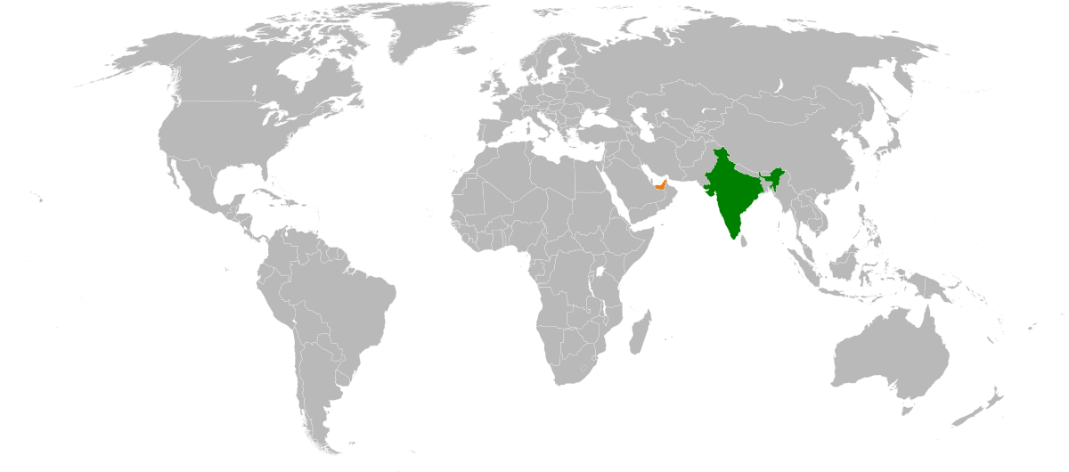
Disclaimer: Copyright infringement is not intended
Context:
- The UAE is one of India’s closest strategic and energy partners in West Asia, and trade was boosted by the signing of a free trade agreement (FTA) in 2022.
Key Details:
- India and the United Arab Emirates (UAE) on Tuesday signed eight pacts to bolster cooperation in key areas such as investments, electricity trade and digital payment platforms, as Prime Minister Narendra Modi and UAE President Mohamed bin Zayed Al Nahyan discussed new fields of collaboration.
- Modi, who arrived in Abu Dhabi on the first leg of a two-nation tour that will also take him to Qatar, reviewed the bilateral partnership and discussed regional and global issues with Mohamed bin Zayed.
- The UAE is one of India’s closest strategic and energy partners in West Asia, and trade was boosted by the signing of a free trade agreement (FTA) in 2022.
About the India-United Arab Emirates (UAE) Bilateral Relationship:
| India and the United Arab Emirates (UAE) share a long-standing and multifaceted relationship, characterized by strong economic, political, and cultural ties. In 2021, the UAE exported $42 billion worth of goods to India, with the primary exports including Crude Petroleum, Diamonds, and Gold. On the other hand, India exported $25.4 billion worth of goods to the UAE, with Refined Petroleum, Jewelry, and Diamonds being the main products. |
Historical Foundations:
- Trade and Cultural Linkages: India and the Arabian Peninsula have a historical relationship dating back centuries, rooted in trade and cultural exchanges. The ancient maritime Silk Route facilitated the movement of goods, ideas, and people between the two regions. This historical connection laid the foundation for the strong ties witnessed today.
- Formal Diplomatic Relations: Formal diplomatic relations between India and the United Arab Emirates (UAE) were established in 1971, following the UAE's independence. This marked a significant step in the bilateral relationship, providing a structured platform for collaboration in various fields.
Economic Cooperation:
By 2022-23, the bilateral trade between the two countries surged to approximately USD 84.5 billion, indicating a substantial growth trajectory in the economic relationship. This exponential increase underscores the deepening economic ties and the mutual benefits derived from trade collaboration.
- Diverse Economic Collaboration: The economic cooperation between India and the UAE spans various sectors. Beyond the traditional focus on oil and gas, key areas of collaboration include infrastructure development, investments, and services. Both countries have recognized the need to diversify their economic engagement to ensure a resilient and sustainable partnership.
- Foreign Direct Investment (FDI): The UAE has emerged as a major source of FDI for India, contributing to economic growth and job creation. Bilateral agreements have been signed to ease regulatory hurdles and promote a conducive environment for investment. This economic synergy has not only strengthened ties but has also fostered innovation and technology exchange.
Energy Security:
- Crucial Supplier of Crude Oil: The UAE plays a pivotal role in India's energy security by being a significant supplier of crude oil. This collaboration helps India meet a substantial portion of its energy needs, ensuring a stable and reliable energy supply. Both nations recognize the importance of energy security for their economic development.
- Renewable Energy Initiatives: In addition to traditional energy sources, India and the UAE are actively collaborating on renewable energy initiatives. This includes investments in solar and wind energy projects, aligning with global efforts to transition towards sustainable and clean energy sources. This shared commitment reflects a forward-looking approach to energy cooperation.
Political and Security Cooperation:
- Common Security Concerns: India and the UAE share common security concerns, particularly in areas such as maritime security and counter-terrorism. Regular defense dialogues and joint military exercises underline their commitment to addressing shared challenges and ensuring regional stability. This collaboration extends to addressing emerging threats such as cyber security and transnational crime.
- Regional Leadership: Both countries have emerged as regional leaders, actively engaging in diplomatic efforts to address conflicts and promote peace in the Middle East and South Asia. This collaborative approach enhances their influence on the global stage.
Recent Developments:
- CEPA and Trade Facilitation: The Comprehensive Economic Partnership Agreement (CEPA), signed in February 2022, marks a significant milestone in the economic relationship. By eliminating tariffs on most goods and streamlining trade procedures, it aims to further boost bilateral trade and investment. This agreement reflects the commitment of both nations to enhance economic ties and create a more favorable business environment.
- Food Security Corridor: The India-UAE Food Security Corridor, launched in 2021, represents a strategic initiative to ensure food security in both countries. Joint investments in agriculture and food processing strengthen the agricultural supply chain, contributing to the long-term sustainability of food resources.
- Prime Minister's Visit: Prime Minister Narendra Modi's visit to the UAE in June 2022 reinforced the strategic partnership and identified new areas of cooperation. High-level visits play a crucial role in nurturing diplomatic ties and exploring opportunities for collaboration in emerging sectors.
Challenges and Opportunities:
- Diversification of Bilateral Trade: While energy cooperation forms a substantial part of the bilateral trade, there is a shared recognition of the need to diversify the trade basket. Both countries are exploring opportunities to expand cooperation in non-traditional sectors, such as healthcare, education, and technology.
- Enhanced Cooperation in Non-Energy Sectors: To unlock the full potential of the partnership, there is a growing emphasis on enhancing collaboration in sectors beyond energy. Strengthening ties in healthcare, education, and innovation can lead to a more comprehensive and balanced relationship.
- Addressing Geopolitical Complexities: The geopolitical landscape in the region presents challenges that both countries must navigate. Tensions and conflicts in neighboring areas require a nuanced approach to ensure stability and security. Diplomatic dialogue and cooperation are essential in addressing these complexities.
Closing thoughts:
- The India-UAE relationship is a dynamic and multifaceted partnership with deep historical roots and contemporary significance. Beyond economic ties, the collaboration extends to political, security, and cultural dimensions. Continued engagement, exploration of new avenues of cooperation, and addressing emerging challenges will be crucial for further strengthening this mutually beneficial relationship. The commitment to diversify the partnership beyond traditional sectors underscores the adaptability and resilience of this strategic alliance.
https://newsonair.gov.in/News?title=Cooperation-with-UAE-in-sectors-like-trade-and-investment-and-defence-and-security-has-grown-manifold%2C-says-PM-Modi&id=477123
https://newsonair.gov.in/News?title=India-and-UAE-signed--historic-Memorandum-of-Understanding--on-LCS-system&id=464289
https://www.hindustantimes.com/india-news/india-uae-ink-eight-pacts-on-electricity-digi-payments-101707863303680.html
https://www.youtube.com/watch?v=aUTQ4Yx1DQo&pp=ygVJRGlzY3Vzc2lvbiBvbiBCaWxhdGVyYWwgUmVsYXRpb25zaGlwIGJldHdlZW4gSW5kaWEgLSBVbml0ZWQgQXJhYiBFbWlyYXRlcw%3D%3D
Heavy rain and snowfall over Western Himalayan Region
Context
- Indian Meteorological Department, IMD has forecast an intense spell of rainfall and snowfall activity over the Western Himalayan Region from today till 21st February.
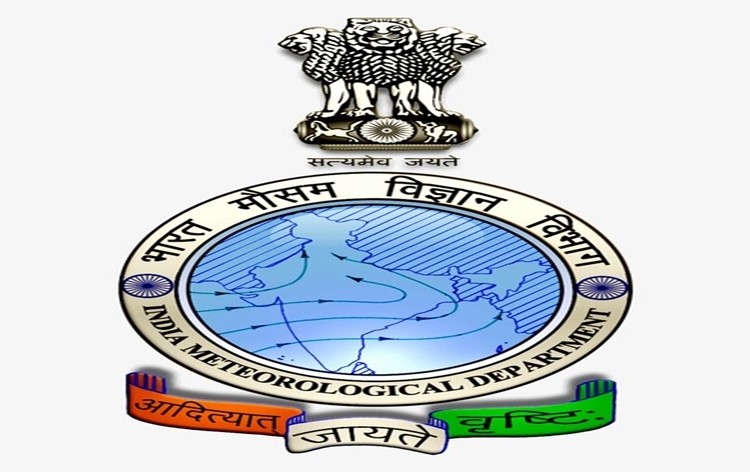
Disclaimer: Copyright infringement is not intended
Key Details:
- Met department said, rainfall is likely over the plains of Northwest India from tomorrow till 21st February.
- It said, heavy rainfall or snowfall is very likely at isolated places over Jammu-Kashmir-Ladakh-Gilgit-Baltistan-Muzaffarabad and Himachal Pradesh till the 20th of this month and over Uttarakhand in the coming two days.
- Very heavy rainfall or snowfall is also very likely at isolated places over Jammu Kashmir-Ladakh-Gilgit-Baltistan-Muzaffarabad, Himachal Pradesh and Uttarakhand tomorrow.
About Types of rainfall:
|
Rainfall Type
|
Formation
|
Characteristics
|
Examples
|
|
Convectional Rainfall
|
- Caused by rising warm air due to uneven heating of the Earth's surface.
|
- Typically occurs in tropical and subtropical regions. Often associated with thunderstorms and lightning. Intense but short-lived bursts of rain.
|
- Afternoon showers in tropical areas. Monsoon rains in India.
|
|
Orographic Rainfall
|
- Occurs when moist air masses are forced to rise over mountains.
|
- Prevalent on the windward side of mountains. Heavier precipitation on the windward slopes, decreasing on the leeward side (rain shadow effect). Can lead to localized flooding.
|
- Rainfall on the western slopes of the Himalayas in India. Coastal mountains in California.
|
|
Frontal Rainfall
|
- Occurs at the boundary between warm and cold air masses.
|
- Associated with weather fronts, leading to widespread and prolonged precipitation. Can include different forms of precipitation like rain, snow, or sleet.
|
- Mid-latitude cyclones in Europe and North America.
|
https://newsonair.gov.in/News?title=Met-Dept-forecasts-heavy-rain-and-snowfall-over-Western-Himalayan-Region&id=477486
Ukrainian city of Avdiivka
Context
- Russia has claimed that it has taken full control of the eastern Ukrainian city of Avdiivka after Kyiv withdrew its troops from the city.
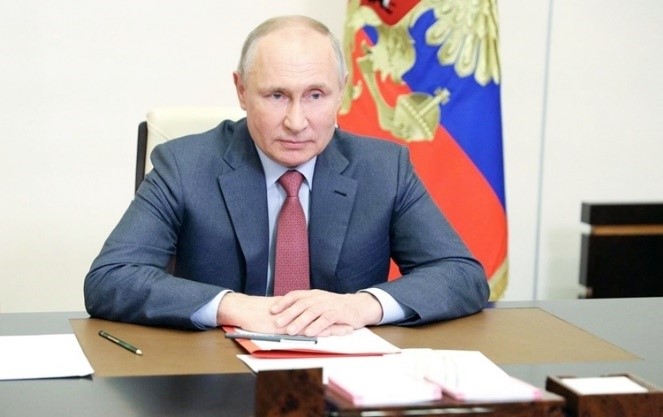
Disclaimer: Copyright infringement is not intended
Details:
- Shantanu Thakur, Indian Minister of State for Ports, Shipping and Waterways flagged off the First Kyiv's military chief said yesterday that they have withdrawn their soldiers to save troops from being fully surrounded after months of fierce fighting.
- Russian President Vladimir Putin has called the capture of the city an important victory. It is Russia's biggest advance since it took the city of Bakhmut in May last year.
About Ukraine and Russia relations:
Tensions and Conflict:
- Orange Revolution (2004): Popular uprising in Ukraine favoring closer ties with the West strained relations with Russia.
- Annexation of Crimea (2014): Russia's annexation of Crimea and support for pro-Russian separatists in eastern Ukraine marked a significant turning point, leading to ongoing conflict and severed diplomatic relations.
- Full-Scale Invasion (2022): Russia launched a full-scale invasion of Ukraine in February 2022, escalating the conflict to a devastating war with widespread international condemnation.
Current Situation:
- Ongoing War: The war in Ukraine continues, causing immense human suffering, destruction, and displacement.
- Severed Diplomatic Relations: Ukraine and Russia have no formal diplomatic ties.
- International Response: The international community has imposed significant sanctions on Russia and provided military and humanitarian aid to Ukraine.
Key Issues:
- Territorial Disputes: Russia's annexation of Crimea and ongoing conflict in eastern Ukraine remain major points of contention.
- NATO Expansion: Russia's opposition to Ukraine's potential membership in NATO has been a significant factor in the conflict.
- Energy Dependence: Ukraine's historical dependence on Russian energy supplies has been a point of leverage for Russia.
https://newsonair.gov.in/News?title=Russia-claims-to-have-taken-full-control-of-Ukrainian-city-of-Avdiivka&id=477483
India's G-20 Sherpa Amitabh Kant
Context
- India's G-20 Sherpa Amitabh Kant has said today that India is aiming to achieve a target of a 35 Trillion dollar economy by 2047 and 10 trillion by 2030 with a growth rate of 9-10 per cent for the next three decades.
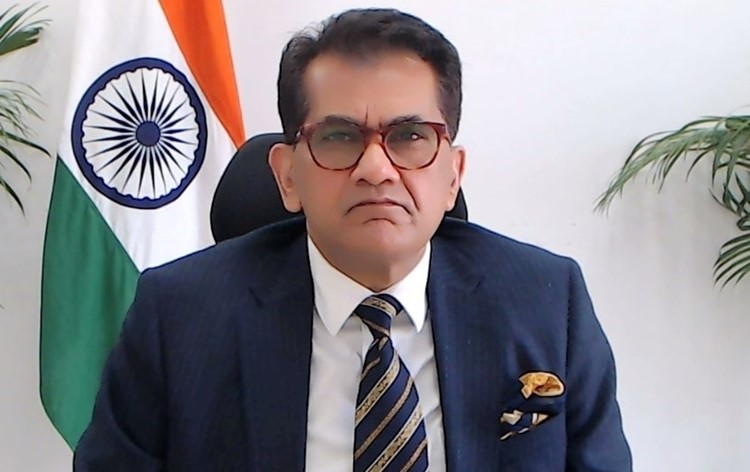
Disclaimer: Copyright infringement is not intended
Details
- Addressing the inaugural session of Mumbai Tech Week today, he said that young entrepreneurs should focus on areas like artificial intelligence, logistics, health and education.
- Mr Kant said that India is the only country in the world that carried out 2.2 billion vaccinations during COVID time.
Key points for young entrepreneurs should focus on areas like artificial intelligence, logistics, health and education:
Arguments for Focusing on These Areas:
- High Growth Potential: These sectors are experiencing rapid growth and innovation, creating significant market opportunities for new businesses.
- Addressing Global Challenges: These areas hold the potential to address pressing global challenges, such as healthcare disparities, educational access, and logistical inefficiencies.
- Technological Advancements: The rise of AI, automation, and digital technologies is transforming these sectors, offering fertile ground for innovative solutions.
However, a one-size-fits-all approach might not be ideal:
- Passion and Expertise: Young entrepreneurs should prioritize areas where they possess genuine passion, skills, and knowledge. Chasing trends without genuine interest can lead to challenges and potential failure.
- Market Saturation: While these sectors offer opportunities, competition can be fierce. Thorough market research is crucial to identify specific niches or innovative approaches to stand out.
- Emerging Trends: Beyond the mentioned areas, other sectors like sustainable development, clean energy, and the creator economy are also witnessing exciting developments, presenting potential opportunities.
- Personal Risks and Rewards: Each sector carries its own risks and rewards. Young entrepreneurs should carefully assess their risk tolerance, financial resources, and long-term goals before making decisions.
https://newsonair.gov.in/News?title=Young-entrepreneurs-should-focus-on-areas-like-artificial-intelligence%2c-logistics%2c-health-and-education%3a-India%26%2339%3bs-G-20-Sherpa-Amitabh-Kant&id=477478
One Nation, One Election
Context
- The High-Level Committee (HLC) on One Nation, One Election under the Chairmanship of former President, Ram Nath Kovind held interactions with political parties and stakeholders in New Delhi yesterday.
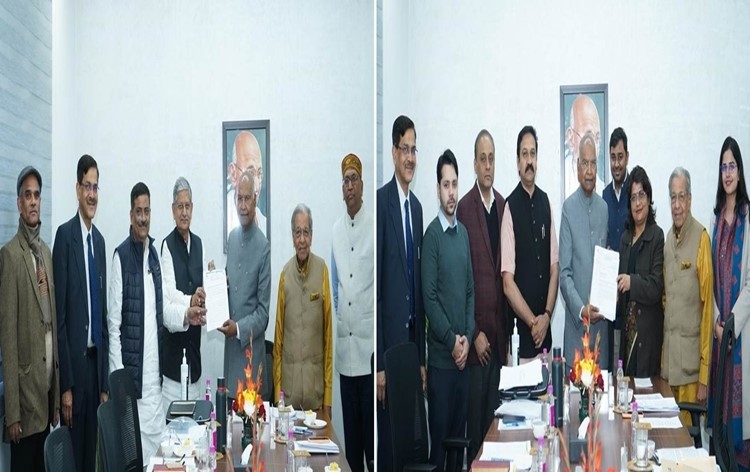
Disclaimer: Copyright infringement is not intended
Details:
- A delegation of Janata Dal (United) comprising Member of Parliament Rajiv Ranjan Singh, and General Secretary Sanjay Kumar Jha interacted with the HLC members and presented a memorandum in support of holding simultaneous elections.
About One Nation, One Election (ONOE):
One Nation, One Election (ONOE) is a proposed policy in India that advocates for holding simultaneous elections for the Lok Sabha (national parliament) and all state legislative assemblies on a single day or within a specific timeframe.
|
Arguments in Favor
|
Arguments Against
|
|
Reduced Costs:
|
Federalism Concerns:
|
|
Proponents argue that ONOE can lead to significant cost savings for the government and political parties by streamlining the election process and reducing logistical expenses associated with multiple elections.
|
Critics argue that ONOE undermines federalism by potentially overshadowing state-level issues and agendas during national elections.
|
|
Increased Voter Turnout:
|
Erosion of Regional Diversity:
|
|
Simultaneous elections might encourage higher voter turnout as voters only need to cast their ballots once, potentially leading to better representation.
|
Simultaneous elections might disadvantage regional parties and candidates, hindering diverse representation in national politics.
|
|
Curbing Policy Paralysis:
|
Logistical Challenges:
|
|
ONOE supporters claim it can address the issue of "policy paralysis" caused by the Model Code of Conduct, which restricts government actions during election periods.
|
Conducting nationwide elections simultaneously poses significant logistical and administrative challenges, requiring robust infrastructure and manpower.
|
|
Improved Governance:
|
Potential for Misuse:
|
|
By aligning election cycles, ONOE could potentially foster better coordination and collaboration between central and state governments.
|
Critics raise concerns about the potential misuse of ONOE by the ruling party to influence voters at various levels simultaneously.
|
https://newsonair.gov.in/News?title=HLC-on-One-Nation%2c-One-Election-held-interactions-with-political-parties-and-stakeholders-in-New-Delhi&id=477472








